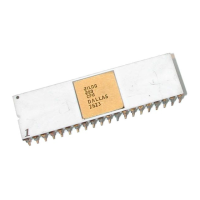=&38
8VHU¶V0DQXDO
0DQXDO2EMHFWLYHV 80
[YLL
8VHRIWKH7HUPV/6%DQG06%
In this document, the terms LSB and MSB, when appearing in upper case,
mean least significant byte and most significant byte, respectively. The
lowercase forms, msb and lsb, mean least significant bit and most
significant bit, respectively.
&RXULHU)RQW
Commands, code lines and fragments, register (and other) mnemonics,
values, equations, and various executable items are distinguished from
general text by the use of the Courier font. This convention is not used
within tables. For example: The STP bit in the
CNTR register must be 1.
Where the use of the font is not possible, as in the Index, the name of the
entity is presented in upper case.
+H[DGHFLPDO9DOXHV'HVLJQDWHGE\+
Hexadecimal values are designated by a uppercase H and appear in the
Courier typeface. For example:
STAT is set to F8H.
8VHRI$OO8SSHUFDVH/HWWHUV
The use of all uppercase letters designates the names of states and
commands. For example: The receiver can force the SCL line to Low to
force the transmitter into a WAIT state. The bus is considered BUSY after
the Start condition. A START command triggers the processing of the
initialization sequence.
8VHRI,QLWLDO8SSHUFDVH/HWWHUV
Initial uppercase letters designate settings, modes, and conditions in
general text. For example: The Slave receiver leaves the data line High. In
Transmit mode, the byte is sent most significant bit first. The Master can
generate a Stop condition to abort the transfer.

